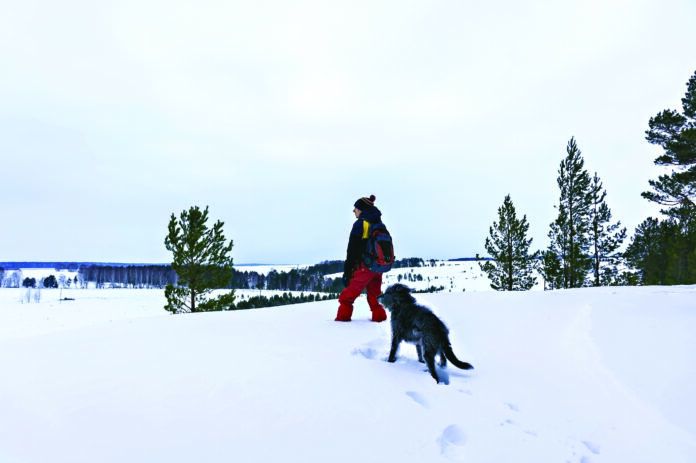There’s no doubt about it. Cold weather increases calorie requirements for a dog. It takes more calories to maintain weight in 20-degree weather than in 75-degree weather. But how many extra calories are necessary hinges on how much cold weather a dog finds herself in. Based on that information, for most dogs the number of calories to add in the winter months is typically zero.
That’s because our dogs live predominantly indoors, where a home’s furnace does all the work of keeping the body warm so the dog doesn’t have to burn extra calories to do so. In fact, a lot of dogs have decreased calorie needs in the cold-weather months. People often do not like being out in the cold and therefore take their dogs on walks that are as short as possible solely so their pets can relieve themselves. Outdoor exercise and the calories it burns often go by the boards in winter. Add to that the fact that between 40 and 60 percent of dogs are overweight to begin with, and the idea of adding calories to their diets to make an accommodation for cold weather becomes an even less healthful idea.
The only dogs who should get some extra calories when it’s cold out are sled dogs or hiking dogs who spend many hours almost every day outside in vigorous physical activity. And the temperatures have to be
truly frigid.
How many extra calories? It’s something of a trial-and-error approach, in part because there are so many variables. It’s not just the amount of exercise a dog gets but also such things as her coat (a husky is better equipped to deal with cold weather than a short-haired boxer) and how humid the air is. People whose dogs are outside and active in extremely cold weather should monitor their pets’ weight and body condition throughout the season and adjust
food accordingly.





